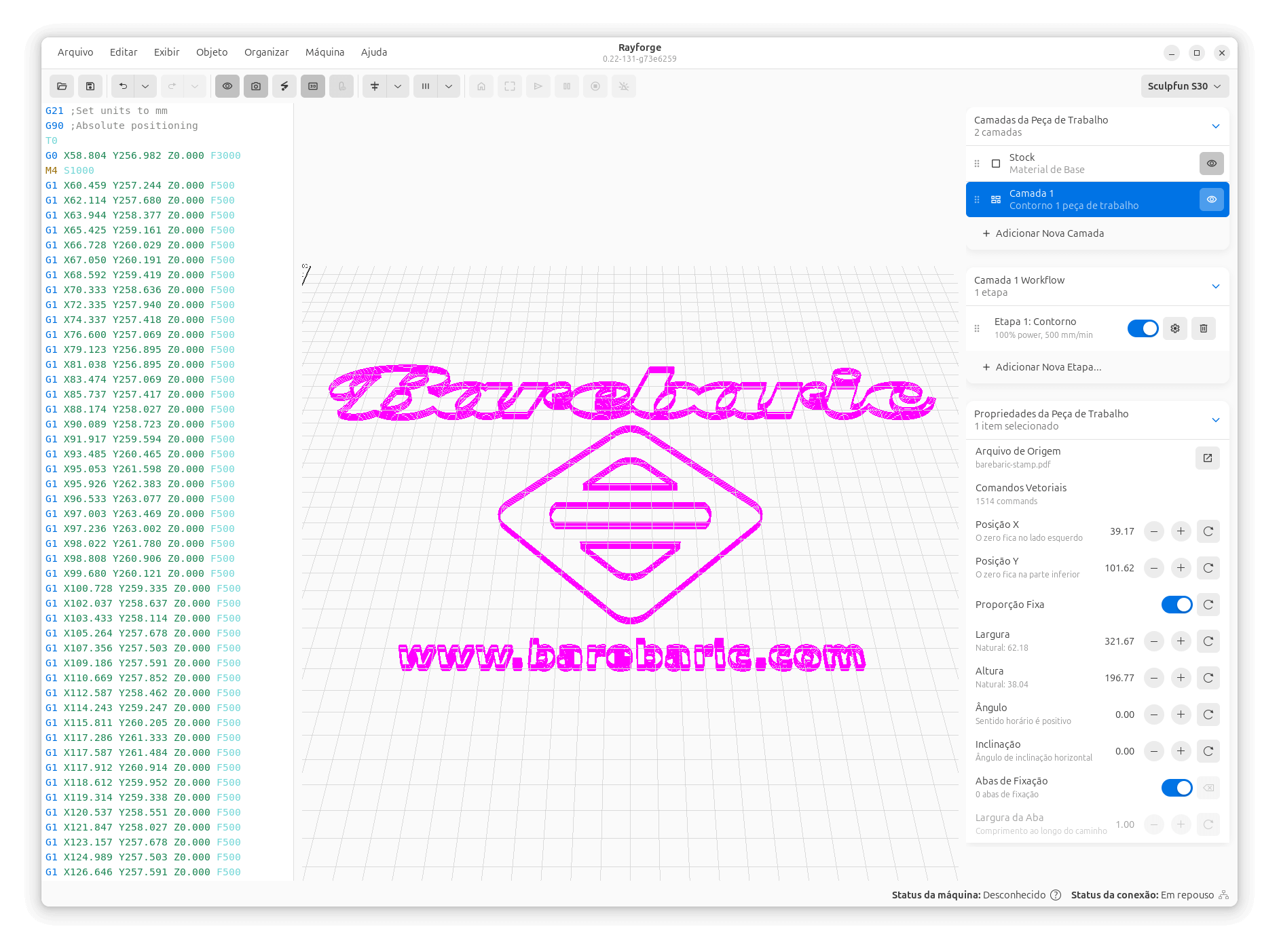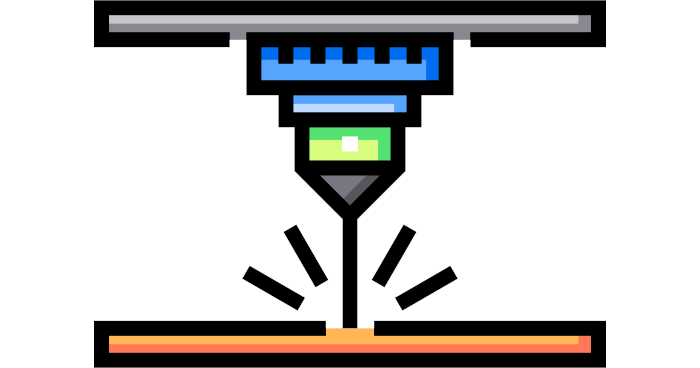Rayforge is a modern, cross-platform G-code sender and control software for GRBL-based laser cutters and engravers.
Built with Gtk4 and Libadwaita, it provides a clean, native interface for Linux and Windows, offering a full suite of tools for both hobbyists and professionals.
This is free and open source software.
Features include:
- Modern UI – Polished and modern UI built with Gtk4 and Libadwaita. Supports system, light, and dark themes.
- Multi-Layer Operations – Assign different operations (e.g., engrave then cut) to layers in your design.
- Versatile Operations – Supports Contour, Raster Engraving (with cross-hatch fill), Shrink Wrap, and Depth Engraving.
- Overscan & Kerf Comp. – Improve engraving quality with overscan and ensure dimensional accuracy with kerf compensation.
- 2.5D Cutting – Perform multi-pass cuts with a configurable step-down between each pass for thick materials.
- 3D G-code Preview – Visualize G-code toolpaths in 3D to verify the job before sending it to the machine.
- Multi-Machine Profiles – Configure and instantly switch between multiple machine profiles.
- GRBL Firmware Settings – Read and write firmware parameters ($$) directly from the UI.
- Comprehensive 2D Canvas – Full suite of tools: alignment, transformation, measurement, zoom, pan, and more.
- Advanced Path Generation – High-quality image tracing, travel time optimization, path smoothing, and spot size interpolation.
- Holding Tabs – Add tabs to contour cuts to hold pieces in place. Supports manual and automatic placement.
- G-code Macros & Hooks – Run custom G-code snippets before/after jobs. Supports variable substitution.
- Broad File Support – Import from SVG, DXF, PDF, JPEG, PNG, BMP, and even Ruida files (.rd).
- Multi-Laser Operations – Choose different lasers for each operation in a job
- Camera Integration – Use a USB camera for workpiece alignment, positioning, and background tracing.
- Cross-platform support – Native builds for Linux and Windows.
- Extensible – Open development model makes it easy to add support for new devices.
- Multi-Language – English, Portuguese, Spanish, and German are supported.
- G-code Dialects – Supports GRBL, Smoothieware, and other GRBL-compatible firmwares.
Website: github.com/barebaric/rayforge
Support:
Developer: Samuel Abels
License: MIT License

Rayforge is written in Python. Learn Python with our recommended free books and free tutorials.
| Popular series | |
|---|---|
| The largest compilation of the best free and open source software in the universe. Each article is supplied with a legendary ratings chart helping you to make informed decisions. | |
| Hundreds of in-depth reviews offering our unbiased and expert opinion on software. We offer helpful and impartial information. | |
| The Big List of Active Linux Distros is a large compilation of actively developed Linux distributions. | |
| Replace proprietary software with open source alternatives: Google, Microsoft, Apple, Adobe, IBM, Autodesk, Oracle, Atlassian, Corel, Cisco, Intuit, SAS, Progress, Salesforce, and Citrix | |
| Awesome Free Linux Games Tools showcases a series of tools that making gaming on Linux a more pleasurable experience. This is a new series. | |
| Machine Learning explores practical applications of machine learning and deep learning from a Linux perspective. We've written reviews of more than 40 self-hosted apps. All are free and open source. | |
| New to Linux? Read our Linux for Starters series. We start right at the basics and teach you everything you need to know to get started with Linux. | |
| Alternatives to popular CLI tools showcases essential tools that are modern replacements for core Linux utilities. | |
| Essential Linux system tools focuses on small, indispensable utilities, useful for system administrators as well as regular users. | |
| Linux utilities to maximise your productivity. Small, indispensable tools, useful for anyone running a Linux machine. | |
| Surveys popular streaming services from a Linux perspective: Amazon Music Unlimited, Myuzi, Spotify, Deezer, Tidal. | |
| Saving Money with Linux looks at how you can reduce your energy bills running Linux. | |
| Home computers became commonplace in the 1980s. Emulate home computers including the Commodore 64, Amiga, Atari ST, ZX81, Amstrad CPC, and ZX Spectrum. | |
| Now and Then examines how promising open source software fared over the years. It can be a bumpy ride. | |
| Linux at Home looks at a range of home activities where Linux can play its part, making the most of our time at home, keeping active and engaged. | |
| Linux Candy reveals the lighter side of Linux. Have some fun and escape from the daily drudgery. | |
| Getting Started with Docker helps you master Docker, a set of platform as a service products that delivers software in packages called containers. | |
| Best Free Android Apps. We showcase free Android apps that are definitely worth downloading. There's a strict eligibility criteria for inclusion in this series. | |
| These best free books accelerate your learning of every programming language. Learn a new language today! | |
| These free tutorials offer the perfect tonic to our free programming books series. | |
| Linux Around The World showcases usergroups that are relevant to Linux enthusiasts. Great ways to meet up with fellow enthusiasts. | |
| Stars and Stripes is an occasional series looking at the impact of Linux in the USA. | |
